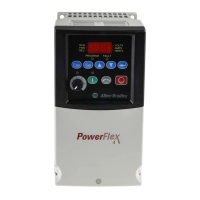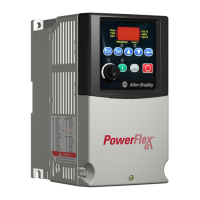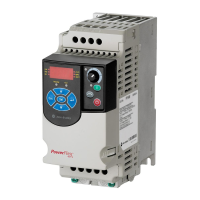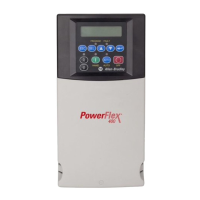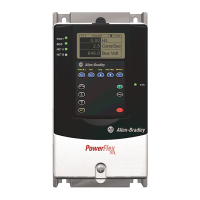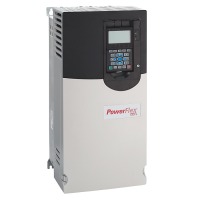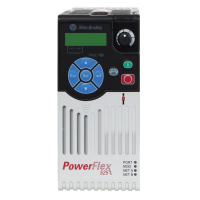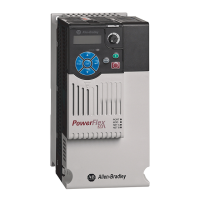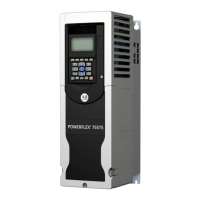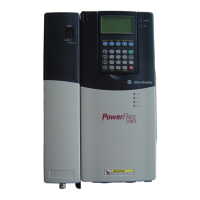Rockwell Automation Publication 7000-TG002J-EN-P - March 2015 37
Fault Messages Chapter 1
X Rec Heartbeat 190 The slave processor drive has detected that the master DSP
software has either over-run or failed to initialize.
• Verify DC Control voltages to both ACB/DPM.
• Possible failed ACB board.
• Cycle power and replace DPM board if necessary.
X Rec InpCtctrClsd 657 Rectifier input contactor closed: The safety control system has
detected a fault in the drive input contactor control system.
The input device indicates closed when it was commanded to
open by the OIBBS.
• Verify the input contactor. In case the contactor has any problem(s), Stop running the
drive and contact the manufacturer.
• Verify the low voltage wiring of the input contactor / circuit breaker control command.
• Verify the low voltage wiring of the input contactor feedback.
• Cycle the control power.
X Rec NSR PS Rng 636 Rectifier non safety-related power supply out of range
: The
rectifier OIBBS diagnostic subsystem has detected an out of
range power supply voltage on the 24Vdc power supply.
• Verify the STO system power supply/connection to the OIBBS.
• Cycle the control power.
• If the same fault still trips the drive, contact the manufacturer for spare parts of the power
supply and/or OIBBS for replacement.
X Rec OIB Detected 656 Rectifier OIB detected: The safety control system has detected
incompatible hardware. One or more optical interface
board(s) have been detected.
• Verify the board mounted on the rectifier OIBBS. It should be OIB2, not OIB.
• In case OIB(s) is/are applied, contact the manufacturer for the OIB2 spare parts for
replacement.
X Rec OIBB Com Flt 624 Rectifier OIBBS communication fault: Communication failed
to the rectifier OIBBS. The communication from rectifier OIBBS
is lost.
• Verify the drive settings. If the drive is not using the STO function, disable STO and verify
that the correct OIBB type is installed.
• Verify the connection between the rectifier OIBBS and the DPM.
• Check and cycle the control power to the safety system (OIBBS).
• If the same fault trips the drive again, contact the manufacturer for the OIBB spare part for
replacement.
X RecOvrTimeOut 135 The rectifier input voltage given by Rec Input Volt (P696) has
exceeded Rec OvrVolt Trp (P173). A warning is logged first
and if the over-voltage occurs repeatedly with at least four
warnings in one second interval then the drive will fault.
• Verify the parameters and inspect the ACB, VSB for possible damage.
• Investigate occurrences of bus transients.
• If the drive trips on this fault repeatedly, system harmonics need to be investigated. Setup
a trend to capture the harmonic voltage, rectifier input voltage, and line voltage to trigger
at this fault. Contact the factory for details.
X Rec OvrVoltage 117 The rectifier input voltage given by Rec Input Volt (P696) has
exceeded the trip settings (P#173). This is detected by the
hardware circuit in the ACB.
• Verify the parameters are set properly.
• Verify VSB connections and tap settings, resistor values, and grounds.
• This is less likely to be caused by a true line overvoltage and more likely to be due to the
effects of capacitive leading VARs on a high-impedance system.
• Tap down the input if possible.
• Investigate occurrences of bus transients.
• Check for loose connections on ACB J27
• Investigate system grounding. Power cable shields grounded only at one end, the source
end.
• Verify if drive is being fed from generators. Review the reactive power capability of the
generators. Contact the factory for details.
• See tech note PowerFlex 7000_4Gen_Gen19
X RecOvrVolt SW 134 The rectifier input voltage Rec Input Volt (P696) detected by
the software has exceeded Rec OvrVolt Trp (P173) for the
delay specified in Rec OvrVolt Dly (P174).
• Verify the parameters and inspect the VSB for possible damage. Investigate occurrences of
bus transients.
• Check for loose connections on ACB J27
• See tech note PowerFlex 7000_4Gen_Gen19
All Drive Types
PF7000A
PF7000B
PF7000C
Marine Drive
Heat pipe Drive
Fault Message Fault Code Description Recommended Action(s)

